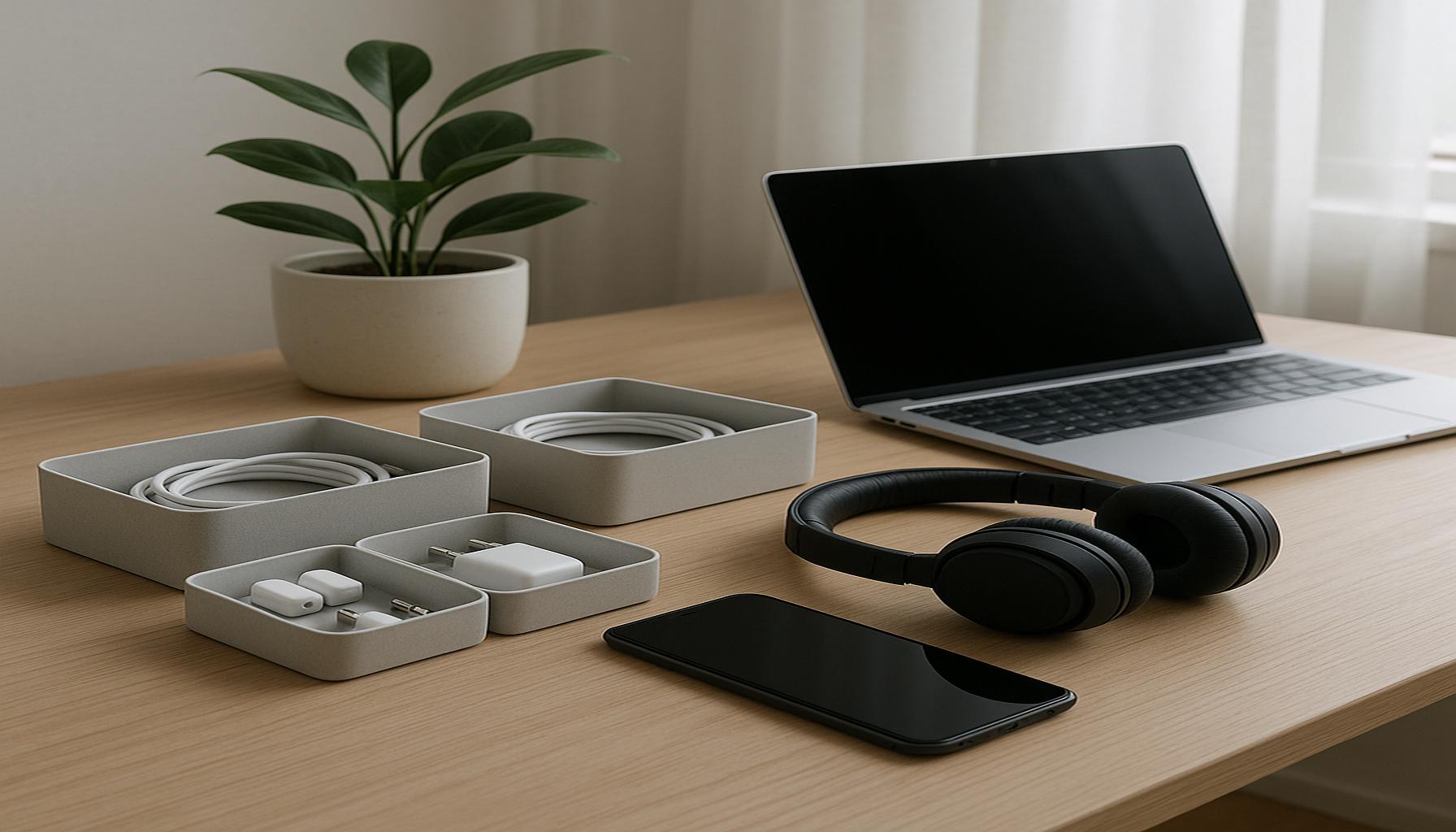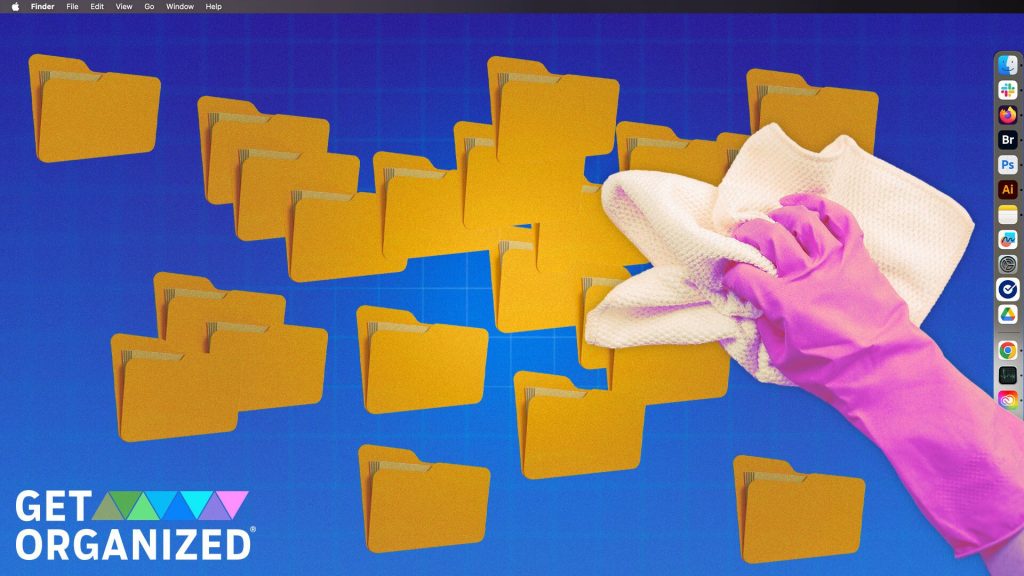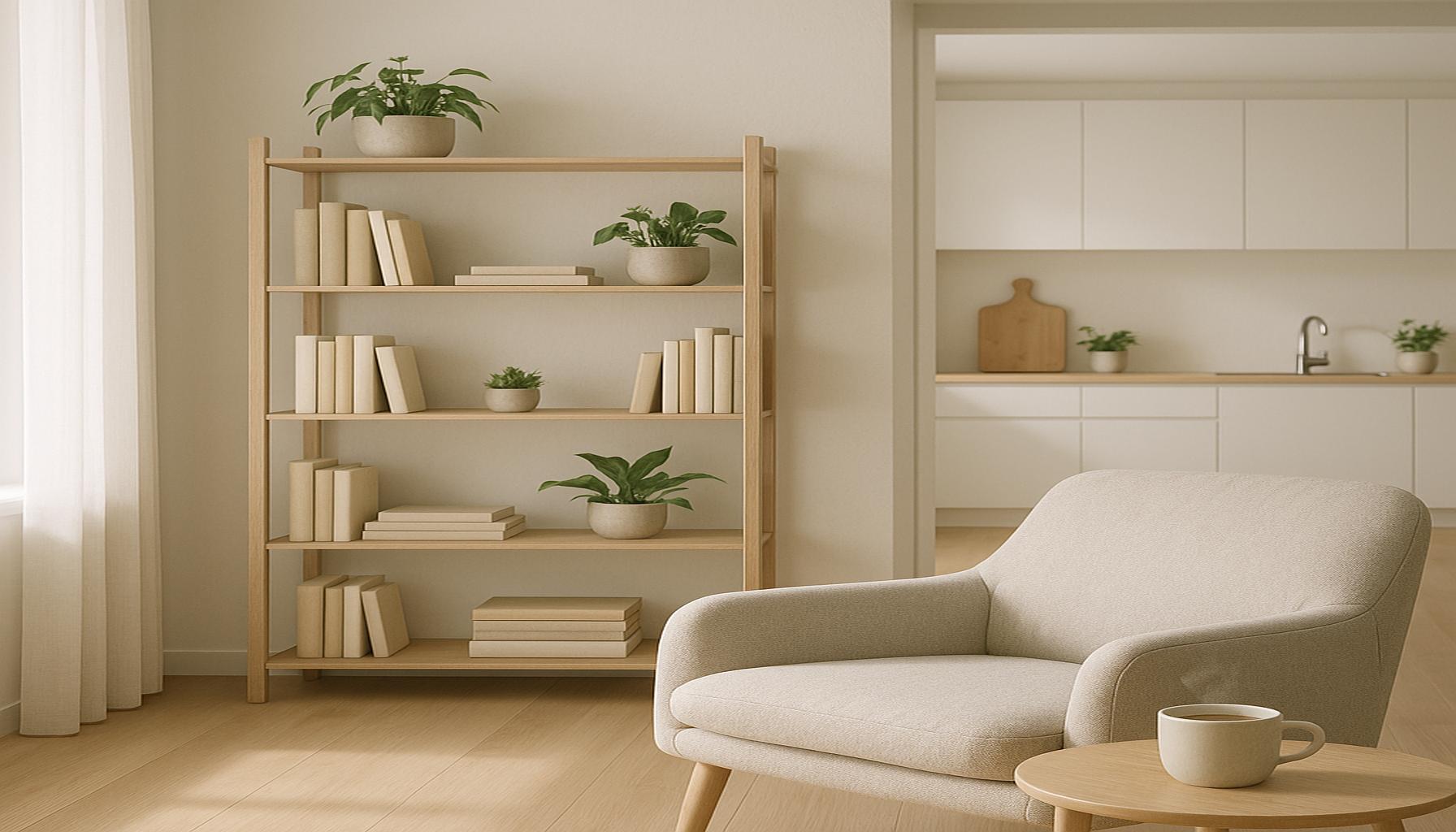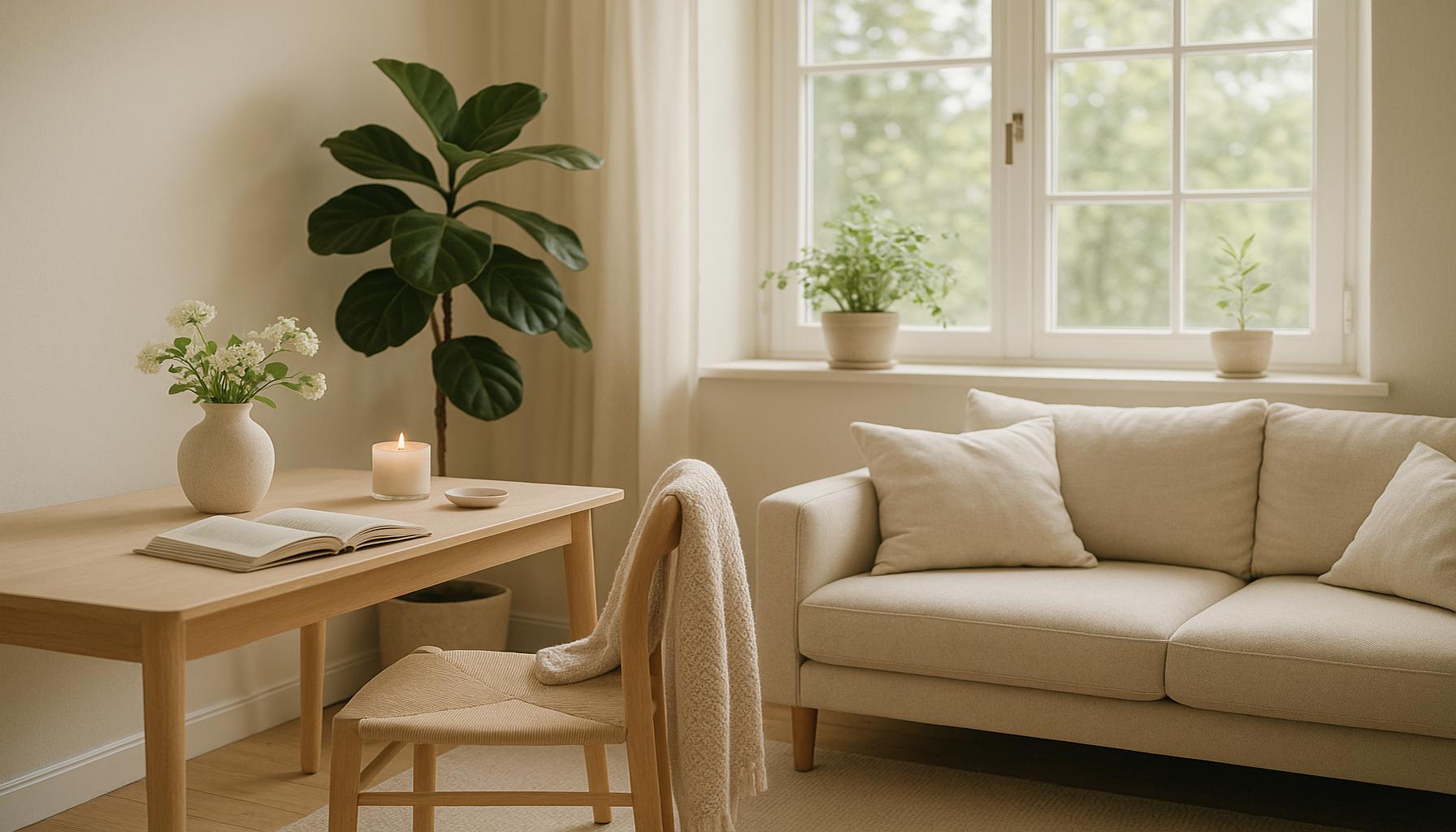Decluttering Technology: How to Simplify Your Devices and Apps to Improve Focus

Understanding the Digital Clutter
In today’s fast-paced society, technology is an integral part of daily routines, whether at work or home. Yet, as helpful as digital devices are, the influx of notifications and apps can create an overwhelming environment that stifles our ability to focus. With the constant ping of incoming messages and the allure of social media constantly vying for our attention, it’s no wonder that many individuals experience diminished productivity. Research reveals alarming insights into this trend: for example, constant notifications can diminish productivity by as much as 40%, signifying a significant loss in valuable work hours.
The average American finds themselves engaged with their devices for over 4 hours daily, tracing their time through various applications. A remarkable statistic indicates that a substantial portion of users have merely a handful of apps they frequently engage with, despite possessing over 80 apps installed on their smartphones. This discrepancy often leads to feelings of anxiety, as users feel compelled to check notifications from apps they seldom use.
The Importance of Digital Decluttering
The data points to a pressing need for a more intentional approach to our digital lives. The modern individual is bombarded with an ocean of options that typically leads to a scatterbrained experience. When devices are cluttered, it becomes increasingly challenging to concentrate on essential tasks, leading to missed deadlines or overlooked responsibilities. Streamlining your digital space is more than just tidying up; it’s about enhancing clarity, focus, and productivity.
Digital decluttering is a proactive strategy that allows users to regain control of their time and attention. By removing unnecessary applications and organizing essential tools, individuals can create a streamlined environment conducive to productivity. Imagine opening your device and instantly gravitating towards the tools that aid your purpose rather than getting lost amidst an overwhelming array of choices. This clarity can foster an enhanced sense of well-being, reducing anxiety and increasing overall satisfaction with digital interactions.
Actionable Strategies for Digital Minimalism
Embarking on the journey of decluttering your digital space can be straightforward with some actionable strategies. Consider the following:

- Identify Redundant Apps: Take a few minutes to evaluate your installed applications. Are there duplicates or apps that serve the same function? Uninstalling these can free up space and simplify your interface.
- Organize Your Device Effectively: Utilize folders and tags to categorize apps by function, such as work, social media, and entertainment. This separation can help you quickly locate the tools you need without getting sidetracked.
- Create a Personalized Digital Environment: Tailor your home screen to prioritize the applications that contribute positively to your focus and productivity, placing distracting apps out of immediate reach.
With each step you take to declutter, you sharpen your focus and cultivate a healthier relationship with technology. Embrace this transformation, as it not only sheds unnecessary distractions but empowers you to reclaim your time and focus. Join us as we explore these strategies further, unlocking new methods of productivity and efficiency in your daily digital life.
DISCOVER MORE: Click here to simplify your digital life
The Impact of Digital Overload
As we navigate through the complexities of modern life, digital overload has become an all-too-familiar experience. The reliance on technology for communication, work, and leisure means that our devices are not just tools; they have evolved into extensions of our daily living. However, this convenience comes at a cost. Studies point to a direct correlation between the volume of digital stimuli we encounter and our capacity to remain focused. When alerts pour in from various apps vying for attention, it becomes increasingly difficult to differentiate between what’s truly important and what’s merely distracting.
One compelling statistic underscores this struggle: 70% of professionals report that frequent interruptions from digital devices result in negative impacts on their work efficiency. This struggle is echoed in various sectors, with employees noting heightened stress levels and burnout due to the pressure created by constant connectivity. Therefore, establishing boundaries in our digital lives is crucial. By embracing the practice of decluttering technology, individuals can take the first steps towards reclaiming their attention spans and enhancing their focus.
Recognizing What We Don’t Need
The digital clutter often goes unnoticed, creeping up gradually as new applications are downloaded, and notifications multiply. A vital step in this decluttering journey is to recognize what is unnecessary. For many, this could mean a collection of apps that promise productivity but ultimately contribute to distraction. For instance, an individual might have various fitness tracking applications loaded onto their device but use just one consistently. The cluttered presence of unused apps can not only take up space but can also serve as a mental distraction. According to research, the sheer number of options can foster decision fatigue, complicating even the most straightforward tasks.
To break free from this cycle, start by conducting a digital detox. Here are some strategies to consider:
- Assess Your Usage: Spend a week tracking how often you use different apps. This awareness can clarify which applications are truly essential.
- Delete the Non-Essentials: If you find apps that you haven’t used in a month or those that provide little value, don’t hesitate to uninstall them.
- Limit Notifications: Disable notifications for lesser-used apps to create a quieter digital space that fosters concentration.
Such deliberate actions not only clear the clutter but also significantly reduce cognitive load. When your screen is streamlined to include only the essential apps that enhance your productivity, you no longer find yourself mindlessly scrolling or jumping from one notification to the next. Ultimately, a more intentional digital environment leads to heightened focus and a more effective use of technology, allowing individuals to redirect their attention towards their goals.
Strategies for Decluttering Your Digital Life
As technology continues to advance, the potential for distraction increases exponentially. To enhance focus and ensure that our devices serve us rather than overwhelm us, implementing effective decluttering strategies is essential. Here are several methods that align with this improvement goal:
1. Uninstall Unnecessary Apps
It’s time to examine the apps on your device critically. Ask yourself which apps you genuinely use and which have become digital clutter. Uninstalling apps that no longer serve a purpose can dramatically reduce visual distractions and improve usability. Fewer apps equal less temptation to scroll aimlessly.
2. Organize Your Home Screen
A disorganized home screen can contribute to frustration and distraction. Consider creating folders based on usage, such as “Work,” “Social,” or “Health.” You can also prioritize frequently used apps, so they are easily accessible, minimizing the time spent searching for what you need.
3. Implement a Digital Downtime Schedule
Mindful technology use is crucial to improving focus. Establish specific times for checking emails, social media, and news updates. During periods of deep work, consider using the “Do Not Disturb” mode to eliminate notifications that can divert your attention.
4. Rethink Notifications
Notifications can be the nemesis of concentration. Take charge by reevaluating the notifications you receive. Disable non-essential notifications, allowing only those that are crucial for your workflow. This simple adjustment can significantly enhance your ability to concentrate.
5. Use Minimalist Interfaces
Choosing apps with minimalist designs can also contribute to a more streamlined digital experience. Look for programs and applications that prioritize functionality over excess features. This choice can help avoid overwhelm and keep your focus on the tasks that matter most.By incorporating these strategies, you can simplify your devices and create a more focused environment conducive to productivity. With a clearer digital landscape, the potential for improved mental clarity and efficiency becomes achievable, allowing you to maximize your focus amid the distractions of modern technology.
| Advantage | Description |
|---|---|
| Enhanced Productivity | Decluttering reduces distractions, allowing for deeper engagement with tasks. |
| Improved Mental Clarity | A simplified interface helps users focus on priorities, leading to better decision-making. |
By nurturing a decluttered technological space, the pursuit of focus becomes not only attainable but essential in today’s fast-paced digital landscape.
DIVE DEEPER: Click here to discover more about mastering prioritization
The Power of Streamlining Your Digital Experience
Once you’ve recognized and eliminated unnecessary applications, the next phase of decluttering technology is streamlining your digital experience. The key is to create a cohesive environment where every app serves a definitive purpose, ultimately allowing for increased productivity and focus. Statistics reveal that workers who implement digital decluttering techniques report a staggering 50% increase in their ability to concentrate and perform tasks more efficiently.
An essential component of streamlining is the organization of applications. For those who use mobile devices, folders can be a game-changer. Group apps by category—social media, finance, health, and productivity—to minimize the time spent searching. This organizational structure reduces cognitive load as it allows users to locate applications quickly and enhances the overall functionality of the device. Moreover, using one primary platform for communication can further reduce distractions. For example, if you utilize WhatsApp, consider integrating it with your email system to consolidate messaging and minimize the need to switch between multiple apps.
Choosing the Right Tools for the Job
The vast array of tools available can be both a blessing and a curse. Many individuals struggle to decide which tools truly elevate their efficiency. A recent study indicated that 80% of users only leverage about 20% of the features within productivity apps. This underutilization stems from a lack of understanding and overcomplication of software interfaces. Thus, it may be beneficial to take a step back and reassess the tools in your digital arsenal.
- Adopt All-in-One Solutions: Applications like Notion or Trello integrate various functionalities, allowing you to handle notes, tasks, and collaboration all within a single interface, thereby reducing the number of separate applications you need to manage.
- Prioritize User-Friendly Interfaces: Opt for applications that emphasize simplicity. A tool should enhance your workflow, not complicate it. Gantt charts in project management software, for instance, may look appealing but can overwhelm; seek alternatives that are intuitive.
- Regularly Evaluate Your Tools: Schedule a quarterly review of your digital tools. Ask whether a specific app is still serving its intended purpose or if it’s simply taking up space in your digital life.
By continually adjusting and refining your toolset, you can ensure that every device and application you use aligns with your personal productivity goals. Remember, the objective is not to eliminate technology altogether but to take control of it. Embracing digital minimalism allows you to leverage technology’s advantages while minimizing its distractions.
Setting Boundaries and Intentional Use
Establishing boundaries with technology can significantly augment your focus and mental well-being. Research shows that a majority of users—over 60%—struggle to resist checking their devices, even when it hampers their productivity. Setting specific times for app usage, creating technology-free zones, and utilizing features such as “Do Not Disturb” can help mitigate the impact of unnecessary interruptions.
Intentional use of technology implies more mindful engagement with your devices. Consider implementing a ‘focus hour’ strategy: designate an hour at the beginning of each workday when certain apps remain closed. During this time, concentrate solely on high-priority tasks without the digital distractions that typically accompany multi-tasking.
By fostering a digital environment that promotes focus and reducing the noise of unnecessary applications, individuals can reclaim their time and improve their overall productivity. This proactive approach to managing technology empowers users to not only enhance their focus but also regain vital control over their day-to-day lives.
DISCOVER MORE: Click here to explore the art of letting go
Transforming Your Digital Landscape
In a world where technology is omnipresent, the practice of decluttering technology has never been more vital. By streamlining devices, eliminating unnecessary applications, and utilizing tools that genuinely enhance productivity, individuals can foster a focused and intentional digital experience. As we’ve explored, the organization of apps into categories, the choice of user-friendly interfaces, and the integration of all-in-one solutions are not merely suggestions; they are actionable tactics that can lead to significant improvements in our ability to concentrate.
Moreover, setting boundaries around technology usage is equally crucial. By implementing a ‘focus hour’ and designating tech-free zones, users can break the cycle of distraction that often accompanies a constant barrage of notifications and messages. Initiating these changes requires a conscious effort, but the payoff is substantial—transforming not only how we work but also how we prioritize mental well-being in our increasingly digital lives.
Ultimately, embracing a philosophy of digital minimalism allows for a more enriching interaction with technology, bringing clarity and purpose to our devices. This shift does not mean eliminating technology altogether; rather, it involves taking the reins and curating a digital environment designed to empower, not overwhelm.
As you embark on your journey to simplify your devices and applications, remember that every small step contributes to a larger goal. With the right mindset and strategies in place, you can reclaim your focus, enhance productivity, and pave the way for a more fulfilling digital existence. Now is the time to take control and discover the profound impact a decluttered digital landscape can have on your life.


